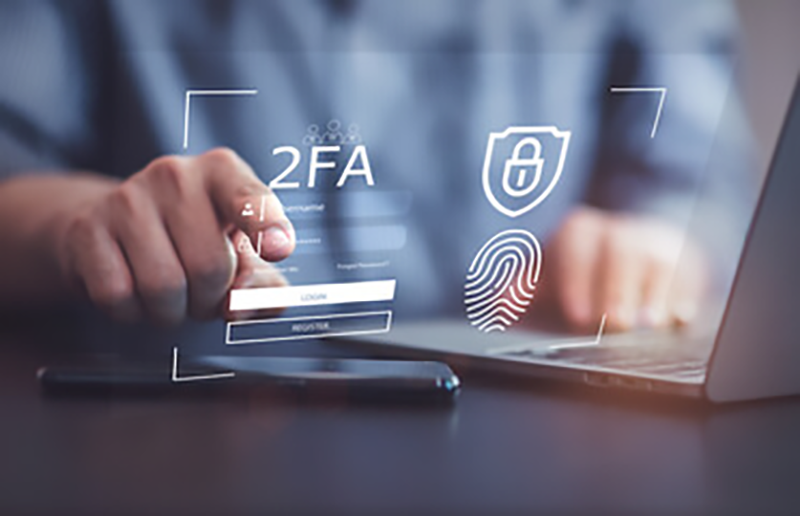Cybersecurity Onion – What Is It?
Did you know that 60% of small and medium-sized businesses (SMBs) fail within six months of a cyberattack?1 It’s a scary thought, but this data shows how important cybersecurity is.
One of the best ways to protect your business is using a multi-layered defense strategy called the Cybersecurity Onion Layer approach. Just like an onion has multiple layers, this approach adds layers of security to protect your data & systems from all angles.
Each layer has its own role in keeping out hackers and safeguarding your data. Learn what the Cybersecurity Onion is and how it works to keep you and your business safe.

What Is The Onion Layer In Cybersecurity
The “onion layer” in Cybersecurity is a way to describe the layers of security you use to protect your information.
The “onion” metaphor suggests that, like peeling back the layers of an onion, each layer of security adds another level of protection.
Each layer works together to protect your data. If one layer fails, others still provide protection. This makes it harder for attackers to hack your sensitive information.
Why The Onion Layer Is The Best Way To Protect Data & Systems
The purpose of the onion model for security is to help you protect your information by using multiple layers of defense.
Here’s why the onion model is useful:
- By having multiple layers, you add extra security. If one layer is breached or fails, the other layers still offer protection.
- Different layers guard against different types of threats. For instance, one layer might stop hackers from accessing your accounts, while another prevents viruses like malware.
- If you rely on just one layer, you’re at higher risk if that layer fails. Multiple layers reduce the chance of a successful attack.
- If a new threat emerges, you can add or adjust layers to protect against it, making your security more flexible.
By layering various security measures, the onion model helps you build a stronger and more reliable defense system.
How Do You Implement The Onion Layer For Your Business?
The number of the security layers isn’t fixed, but the idea is to have several layers of protection, detection, and remediation. The amount of layers and how to implement this approach is dependent on many factors; size of company, technology in-use, physical locations where the data is located/stored and processed.
Here’s how you can implement the onion layer approach for a business:
1. Perimeter Security (Outer Layer)
Objective: Perimeter security is like the outer wall of a castle. It focuses on preventing threats from entering your system. This includes tools that act as your first line of defense against external attacks.
- Firewalls: Implement both hardware and software firewalls to block malicious traffic.
- Intrusion Detection and Prevention Systems (IDS/IPS): Monitor traffic for signs of suspicious activity.
- Network Segmentation: Divide the network into smaller segments to limit access and reduce the impact of breaches.
2. Network Security
Objective: Once past the perimeter, network security works to monitor and protect your internal systems. This includes measures like secure routers, switches, and network segmentation. The goal is to ensure that data moving across your network is safe from threats.
- Virtual Private Networks (VPNs): Encrypt data transmitted between remote workers and the corporate network.
- Secure Wi-Fi Access: Implement WPA3 encryption for wireless connections and ensure strong authentication practices.
3. Endpoint Protection
Objective: Endpoints are entry points for attackers. Endpoint protection makes sure these devices are secure and can’t easily be exploited.
- Antivirus/Antimalware: Ensure all endpoints (desktops, laptops, mobile devices) are protected by Endpoint protection.
- Patch Management: Automate updates to keep systems and applications patched against vulnerabilities.
4. Access Control & Identity Management
Objective: This layer controls who can get into your systems and what they can do once they’re inside. This helps confirm that the right people have the right level of access.
- Multi-factor Authentication (MFA): Implement MFA for all accounts, especially those with privileged access.
- Role-Based Access Control (RBAC): Limit access to systems based on roles and responsibilities.
- Identity and Access Management (IAM): Monitor and manage user identities and permissions.
5. Application Security
Objective: Attackers often target applications to find vulnerabilities. Application security focuses on keeping apps safe through secure coding practices, regular updates, and tools that check for vulnerabilities like SQL injection or cross-site scripting.
- Secure Development Practices: Incorporate security into the software development lifecycle (SDLC) through regular code reviews and vulnerability testing.
- Web Application Firewalls (WAFs): Protect web applications from threats like SQL injections and cross-site scripting (XSS).
- API Security: Ensure that APIs used in the business are securely designed, tested, and monitored.
6. Data Security (Encryption & Backup)
Objective: Data security involves using encryption (to scramble data) and regular backups (to ensure you don’t lose important information). Even if someone manages to steal your data, encryption makes it unreadable to them.
- Encryption: Encrypt sensitive data both at rest (stored on systems) and in transit (during communication). This includes email encryption and disk encryption.
- Data Loss Prevention (DLP): Use DLP tools to prevent unauthorized sharing or transfer of sensitive data.
- Backups: Regularly backup data to an offsite location, ensuring that backups are encrypted and can be restored in case of ransomware or system failures.
7. Monitoring & Incident Response (Detection Layer)
Objective: This layer involves tools and systems that watch for unusual or harmful activity. If something suspicious happens, incident response plans help you act fast to minimize damage and get your systems back to normal.
- Security Information And Event Management (SIEM): Implement SIEM solutions to aggregate logs and detect anomalies in real-time.
- Incident Response Plans: Develop and regularly test an incident response plan to handle breaches, ransomware attacks, or insider threats.
- Forensics And Analysis: If an incident occurs, conduct post-incident forensics to understand the cause and prevent future breaches.
8. User Education & Awareness (Human Layer)
Objective: Humans are often the weakest link in cybersecurity (but we’re also the last line of defense!). By educating your users on recognizing and avoiding security threats, you can reduce the chances of human error leading to a breach.
- Security Training: Provide ongoing security awareness training to employees, focusing on phishing attacks, social engineering, and secure password practices.
- Simulated Ransomware Tests: Run regular Ransomware attack simulations to test and improve employee resilience against Ransomware.
- Policy Enforcement: Make sure employees understand and adhere to corporate security policies.
9. Physical Security
Objective: This layer involves securing the physical locations where your systems are kept. It includes using things like locks, surveillance cameras, and access badges to make sure only authorized people can get to your hardware.
- Access Control Systems: Implement physical access control to server rooms and data centers.
- Surveillance And Monitoring: Use video surveillance and alarms to monitor sensitive areas.
- Secure Disposal: Ensure that old equipment, such as hard drives, is properly sanitized or destroyed to prevent data leaks.
10. Cloud Security
Objective: Many businesses store data and run services in the cloud. Cloud security focuses on ensuring that your cloud provider has strong security practices and that you manage your data correctly
- Cloud Access Security Brokers (CASBs): Enforce security policies between on-premise infrastructure and the cloud.
- Cloud Encryption: Ensure that data stored in cloud environments is encrypted and that encryption keys are securely managed.
- Third-Party Risk Management: Assess and monitor the security of third-party cloud providers to ensure compliance with industry standards and regulations.
Setting up these layers makes it much harder for attackers to access your valuable information.

FAQ
What Is An Onion Layer In Cybersecurity?
An onion layer in cybersecurity refers to multiple layers of security measures stacked to protect systems. Like an onion’s layers, each layer adds another level of defense, making it harder for attackers to breach the system. This approach helps ensure that if one layer fails, others still provide protection.
Is The Onion Layer Effective At Stopping Cyber Attacks?
Yes, the onion layer approach is effective in stopping cyber attacks. Placing multiple security measures creates several barriers for attackers. If one layer is breached, others remain to protect the data and systems, which makes it more difficult for attacks to succeed.
How Can The Onion Layer Prevent Ransomware Attacks?
The onion layer prevents ransomware attacks by using multiple security defenses, such as firewalls, endpoint protection, and regular backups. If ransomware breaches one layer, others help contain and mitigate the threat. 2Secure enhances this approach with advanced security solutions, which protect your business from costly disruptions and ensure fast recovery in the event of an attack.

Source:
- 2Secure Corp. (2022, June 29). 60% of SMB’s Fail Within Six Months of Cyberattack – 2Secure Corp. 2Secure Corp. https://2securecorp.com/cybersecurity-news/60-of-smbs-fail-within-six-months-of-cyberattack-2/




